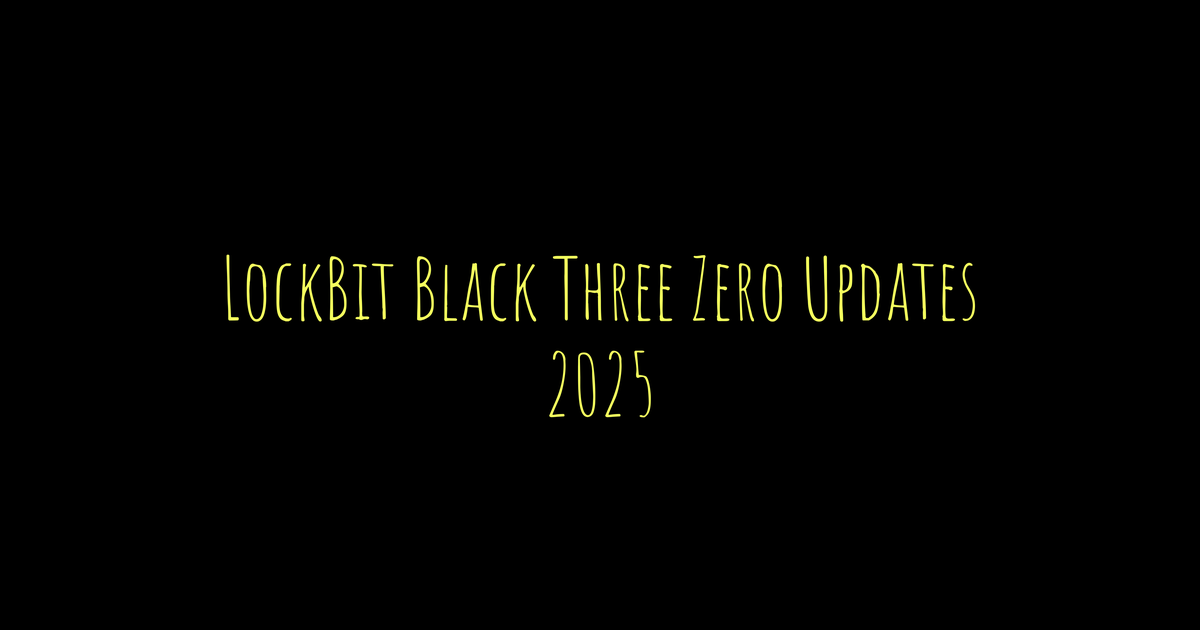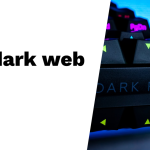LockBit Black 3.0 marks a notable update in the ransomware world, debuting in 2022 as a refined evolution of the LockBit family. Based heavily on BlackMatter’s code, it brings faster encryption that can lock a whole system in under a minute and smarter anti-analysis tricks like code obfuscation and debugger detection. Operators have even launched what they call a bug bounty program, offering up to $1 million for leaks or flaws—an unusual move for such groups. The ransomware spreads through common infection routes like phishing and RDP exploitation, leverages tools like PsExec for lateral moves, and exfiltrates data with custom utilities before encrypting files. Defenders face challenges given its advanced persistence methods and evasive techniques but can mitigate risks by patching systems, enforcing multi-factor authentication, segmenting networks, and keeping backups offline.
Table of Contents
- LockBit Black 3.0 Overview and Evolution
- Technical Foundation and Bug Bounty Program
- Payload Structure and Execution Flow
- Advanced Anti-Analysis and Evasion Methods
- Deep Configuration and Behavior Controls
- Processes and Services Targeted for Disruption
- Initial Access Strategies and Tools
- Methods of Lateral Movement Across Networks
- Data Exfiltration Techniques and Channels
- Impact on Systems and Post-Infection Actions
- Ransom Note Characteristics and Victim Communication
- Mitigation Strategies and Best Practices for 2025
- Mapping LockBit 3.0 to MITRE ATT&CK Framework
- Additional Insights on LockBit 3.0 Operations
- Frequently Asked Questions
LockBit Black 3.0 Overview and Evolution
LockBit Black 3.0, appearing in mid-2022, represents a major leap forward from its predecessor, LockBit 2.0, which suffered from critical flaws prompting a swift overhaul. This latest iteration draws heavily from the BlackMatter ransomware codebase, indicating a significant technical refresh rather than a simple version bump. The group behind LockBit Black has adopted an unusual approach in cybercrime by launching a bug bounty program that offers rewards up to $1 million to reveal security weaknesses or leaks of affiliate identities, a move aimed at strengthening operational security and intimidating rivals. LockBit 3.0 also expanded its payment methods to include privacy-focused cryptocurrencies like Monero and Zcash, alongside Bitcoin, enhancing anonymity for ransom transactions. Operators have aggressively promoted their ransomware-as-a-service model through persistent marketing efforts and the maintenance of multiple mirror leak sites, introducing an instant search tool on these platforms to streamline data exposure. Technically, LockBit 3.0 boasts faster encryption speeds and improved anti-analysis techniques, making it harder to detect and respond to in real time. Its rise has made it one of the most active ransomware operations throughout 2023 and into 2024, reflecting not only a polished codebase but also a refined business model that aggressively recruits and supports affiliates to maximize impact and reach.
Technical Foundation and Bug Bounty Program
LockBit 3.0’s technical foundation is heavily rooted in the BlackMatter ransomware codebase, which provided a modern, more stable starting point. This inheritance allowed LockBit to incorporate advanced encryption speed improvements and enhanced evasion tactics, such as refined payload execution flow and sophisticated packing and obfuscation methods that make reverse engineering far more difficult. The ransomware’s architecture supports dynamic configuration updates, enabling rapid deployment of patches and new features without disrupting ongoing operations. One of the most striking innovations from LockBit is its public bug bounty program, offering rewards up to $1 million for exposing identity leaks or software vulnerabilities within their infrastructure or affiliate operations. This approach is rare among cybercriminal groups and serves a dual purpose: it functions as a security measure to identify and fix weak points while also acting as a media strategy to deter insider leaks and rival factions. The bug bounty platform operates alongside multiple mirrored leak sites, reinforcing LockBit’s pressure tactics during negotiations. By incentivizing affiliates and outsiders to report flaws, LockBit maintains tighter operational security and showcases confidence in its infrastructure. This blend of offensive security practices and public relations savvy marks a new chapter in ransomware group professionalism and resilience.
Payload Structure and Execution Flow
LockBit 3.0 payloads maintain the Windows Portable Executable (PE) format consistent with earlier LockBit and BlackMatter variants, allowing for familiar but refined execution on Windows hosts. Initial infections typically leverage frameworks like Cobalt Strike or secondary malware such as SocGholish to deliver the ransomware, facilitating stealthy entry. Once deployed, the ransomware demands administrative privileges; if these are not granted, it attempts to bypass User Account Control (UAC) by exploiting an elevated COM interface through dllhost.exe with a specific GUID. For persistence, LockBit 3.0 installs multiple system services bearing legitimate-sounding names like SecurityHealthService and WdBoot, which helps it blend into normal system operations. The ransomware copies itself into the %programdata% directory and executes from there, ensuring it runs with appropriate permissions. Its encryption routine is notably fast, capable of locking an entire host in less than a minute, minimizing the window for detection or interruption. After encrypting files, the payload drops ransom notes with campaign-specific randomized file prefixes and extensions, and changes the desktop wallpaper to a black background with clear ransom instructions. The ransomware also includes routines to clear Windows event logs and delete volume shadow copies, actively preventing recovery efforts. Victims are then directed to communicate with attackers via Tor-based portals for ransom negotiations, completing a payload design that is efficient, evasive, and tailored for rapid impact.
Advanced Anti-Analysis and Evasion Methods
LockBit Black 3.0 employs a sophisticated suite of anti-analysis and evasion techniques designed to thwart sandbox, debugger, and forensic investigations. At its core, the ransomware uses advanced code packing and obfuscation, including dynamic API resolution, to conceal malicious calls and make static analysis far more difficult. Function trampolines combined with XOR and bit-rotation obfuscation hide critical API usage, effectively masking its behavior from automated tools.
One notable feature is the requirement for a campaign-unique password passed as a command-line argument to decrypt and execute the payload. This measure effectively blocks sandbox environments and automated detonation systems that fail to supply the correct password, halting execution before malicious activity can be observed. Additionally, LockBit 3.0 performs debugger detection by inspecting heap flags in the Process Environment Block, such as HEAP_TAIL_CHECKING_ENABLED and HEAP_VALIDATE_PARAMETERS_ENABLED, which are often enabled during debugging sessions.
To further defend against analysis, the ransomware hides its threads from debuggers using the NtSetInformationThread API with the ThreadHideFromDebugger flag, preventing many common debugging tools from attaching or stepping through execution. It also modifies or encrypts debugger-related functions like DbgUiRemoteBreakin, adding another layer of resistance against dynamic analysis.
LockBit 3.0 incorporates environmental checks that avoid execution on systems configured with Romanian, Arabic, or Tatar language settings, likely to sidestep law enforcement or regions considered off-limits. This language filtering is coupled with environment keying and other anti-virtual machine and sandbox detection techniques that identify and evade common security tools.
The ransomware’s configuration can enforce strict execution conditions, such as checking for mutex existence to prevent multiple infections, and may self-delete after execution depending on campaign settings, complicating forensic recovery. These combined methods create a resilient malware strain that resists analysis, slows incident response, and increases the chance of a successful attack.
Deep Configuration and Behavior Controls
LockBit Black 3.0 employs a highly sophisticated configuration system that is both heavily encrypted and compressed, requiring dedicated decryption steps before the ransomware can activate its payload. This configuration houses critical elements such as RSA-1024 keys, unique company IDs, and comprehensive exclusion lists for folders, files, and extensions to avoid encrypting system-critical or unwanted data. It also includes detailed inventories of computer names to exclude and lists of services or software targeted for termination to reduce interference during encryption. Credentials for setting the default logon user, essential for maintaining persistence, are securely stored within the config.
Behavioral control is finely tuned through multiple boolean flags, allowing LockBit 3.0 to operate with precision. These flags determine whether to encrypt all files or limit encryption to specific large file types, whether to randomize encrypted file names, and whether to skip hidden files. The ransomware enforces language checks to avoid certain regions and can include or exclude encryption of Microsoft Exchange files and network shares. It actively terminates a broad spectrum of processes and services, including backup, database, and antivirus software, to maximize encryption success and prevent interference. Mutex creation is another key behavior controlled by the config, ensuring only one instance runs on a single host.
Post-encryption activities are also governed by configuration options, such as changing the desktop background to a ransom-themed wallpaper, printing ransom notes, and registering custom icons to reinforce the demand visually. LockBit 3.0 supports advanced operational features like logging command-and-control communications for troubleshooting or control, self-destruction routines triggered on errors or if multiple instances are attempted, and attempts to bypass User Account Control (UAC) when elevated privileges are lacking. The ransomware’s lateral movement tactics, using tools like PsExec and Group Policy Objects, are similarly managed through configuration, allowing it to restart processes remotely or propagate across networks efficiently.
In practice, this deep configuration framework means LockBit 3.0 can be precisely tailored for each campaign or target environment, balancing stealth, speed, and impact. For example, an operator might enable encryption of network shares in one attack but disable it in another to avoid detection. Such granular control makes LockBit Black 3.0 a formidable threat that adapts to the environment while maintaining operational effectiveness.
Processes and Services Targeted for Disruption
LockBit Black 3.0 takes a highly aggressive approach to disrupting key processes and services to maximize encryption success and hinder recovery efforts. It systematically terminates backup-related services, including popular solutions like Veeam, to block any attempts at restoring data from backups. Database services, particularly Microsoft SQL Server components, are also stopped, allowing the ransomware to encrypt files without encountering file locks or access issues. Antivirus and endpoint protection tools such as Sophos are targeted and shut down to reduce the chances of detection during the attack. The ransomware also disables Microsoft Exchange services, effectively cutting off email functionality and complicating communication and data access for victims. Productivity applications including Microsoft Office components like Excel, Word, and Outlook are closed to unlock files for encryption, alongside browsers such as Firefox and messaging clients like Thunderbird and TheBat. Even basic system utilities, like notepad and wordpad, are terminated as part of LockBit’s cleanup routines. The list of processes and services it targets can vary depending on the campaign configuration, allowing affiliates to tailor the disruption for maximum impact. This strategy of methodically killing critical services and applications is central to LockBit 3.0’s goal of preventing data access and making recovery without paying the ransom significantly more difficult.
| Category | Targeted Services/Processes | Purpose |
|---|---|---|
| Backup | Veeam, other backup software services | Prevent data restoration |
| Database | MS SQL Server components, MSSQL related services | Allow encryption without file locks |
| Antivirus/Endpoint Protection | Sophos and others | Minimize ransomware detection |
| Email Services | Microsoft Exchange services | Disrupt email and data availability |
| Productivity Applications | Microsoft Office components (Excel, Word, Outlook) | Unlock files for encryption |
| Browsers | Firefox | Ensure open files can be encrypted |
| Messaging Clients | Thunderbird, TheBat | Ensure data encryption |
| System Utilities | Notepad, Wordpad | Part of cleanup routines |
| Campaign-Specific | Multiple services and processes | Maximize encryption impact and prevent data access |
Initial Access Strategies and Tools
LockBit Black 3.0 affiliates use a diverse set of initial access methods to infiltrate target networks. Commonly, they exploit Remote Desktop Protocol (RDP) vulnerabilities and abuse stolen or valid credentials to gain entry. Phishing campaigns and drive-by compromises remain frequent infection vectors, often serving as the first foothold in a victim environment. Public-facing applications with unpatched vulnerabilities are also targeted to breach defenses. Once inside, attackers rely heavily on valid credentials to move laterally and escalate privileges within the network. They leverage open-source and freeware tools such as Mimikatz and ProcDump for credential dumping and reconnaissance, gathering critical information without triggering immediate suspicion. Remote access utilities like Splashtop and Ngrok facilitate control over compromised systems and support lateral movement. To deploy malware and handle data transfers, tools like Chocolatey and FileZilla are commonly employed. For executing commands across multiple hosts, PsExec and Group Policy Objects (GPO) enable efficient lateral execution and spreading. Network scanning utilities, including SoftPerfect Network Scanner, assist in identifying vulnerable hosts and mapping the network landscape. When preparing for data exfiltration, attackers use tools like Rclone and WinSCP to transfer stolen data discreetly. This toolkit approach underscores the adaptability and operational sophistication of LockBit 3.0 affiliates during the initial access and lateral movement phases.
Methods of Lateral Movement Across Networks
LockBit Black 3.0 employs a diverse set of lateral movement techniques to spread rapidly and deeply within targeted networks. One common method is the use of PsExec, which allows remote command execution on compromised hosts, enabling attackers to run ransomware payloads or other tools without direct user interaction. The ransomware also abuses Group Policy Objects (GPOs) to deploy malware and execute commands across multiple domain-joined systems simultaneously, making it easier to scale the infection. Remote Desktop Protocol (RDP) is frequently exploited either through brute force attacks or session hijacking, giving attackers interactive access to additional machines. SMB protocols are leveraged not just for file sharing but to propagate the ransomware onto network shares, increasing the scope of encryption. Additionally, LockBit 3.0 uses Splashtop remote desktop software for interactive sessions, which can bypass some security controls by blending in with legitimate remote access tools. Stolen or hardcoded credentials play a crucial role in minimizing resistance when moving laterally, as valid credentials allow the malware to access systems without triggering immediate alarms. A notable evasion tactic is rebooting infected hosts into Safe Mode with Networking, which disables many endpoint protections and facilitates further lateral movement. These tools and methods are rarely used in isolation; instead, LockBit 3.0 operators combine them strategically to maximize network penetration. The ransomware also includes reconnaissance tools that map network topology and identify high-value targets before spreading, ensuring efficient and targeted deployment. To avoid detection during lateral movement, the malware clears event logs and disables defensive mechanisms, reducing the chances of triggering alerts. This multi-pronged approach to lateral movement makes LockBit Black 3.0 particularly effective at compromising large environments quickly and stealthily.
Data Exfiltration Techniques and Channels
LockBit 3.0 integrates a custom data exfiltration tool named Stealbit, designed to quietly siphon off sensitive information before the encryption phase begins. This pre-encryption exfiltration gives attackers stronger leverage during ransom negotiations by threatening to publicly release stolen data. To avoid raising alarms, LockBit 3.0 leverages legitimate public cloud storage platforms like MEGA, Premiumize, Anonfiles, and Sendspace as drop points for the stolen files. These services blend exfiltration traffic with normal user activity, helping attackers evade network detection. The ransomware employs Rclone, a command-line cloud storage manager, to automate uploading data to various cloud providers, splitting large datasets across multiple services to bypass file size limits and reduce the chance of triggering security alerts. Credentials used for these cloud uploads are either stolen from victims or preconfigured by attackers, ensuring seamless access. Furthermore, victim and infection metadata are sent to LockBit’s command-and-control servers via encrypted HTTP POST requests, maintaining stealthy communication. After exfiltration, stolen files often appear on LockBit’s dark web leak sites, increasing pressure on victims to pay by threatening public exposure.
Impact on Systems and Post-Infection Actions
LockBit Black 3.0 carefully encrypts files on local drives and network shares but deliberately excludes critical system files to avoid crashing the infected system prematurely. This selective encryption ensures the victim’s device remains operational long enough for the attackers to demand ransom. To prevent recovery via Windows restore points, the ransomware aggressively deletes Volume Shadow Copies using WMI calls. It also clears out the recycle bin and erases log files, effectively removing traces that could aid forensic investigators. Shortly after encryption, the desktop wallpaper and icons are replaced with LockBit’s branding and ransom instructions, making the infection unmistakable to users. Approximately ten minutes after infection, the ransomware may forcibly shut down the host to interrupt any ongoing user or defensive actions, increasing pressure on victims to pay quickly. LockBit 3.0 creates mutex objects to prevent multiple ransomware instances from running simultaneously, avoiding conflicts that could expose its presence. Victim details and bot information are encrypted with AES and sent via HTTP POST to command and control servers, enabling attackers to track infections and manage negotiations efficiently. Depending on its configuration and infection status, LockBit can self-destruct or uninstall components to cover its tracks. It also terminates processes and services critical to backup and recovery, including database and antivirus services, to maximize the chance of ransom payment. Post-infection, attackers closely monitor victim responses through Tor portals and leak sites, managing communications and negotiations in real time. This combination of system impact and post-infection actions reflects a well-orchestrated approach designed to maximize disruption, hinder recovery, and pressure victims into prompt payment.
Ransom Note Characteristics and Victim Communication
LockBit Black 3.0 has refined its ransom note strategy to be more evasive and psychologically coercive. Each ransom note file uses randomized names, extensions, and prefixes specific to the campaign, making automated detection and blocking more difficult. Victims find these notes as plain text files, typically accompanied by a desktop wallpaper switch to a stark black background with clear ransom instructions. The notes bluntly inform victims that their data has not only been encrypted but also stolen, threatening immediate publication across multiple dark web leak sites. To increase pressure, LockBit warns that competitors or other criminals could buy and publicly release the data if payment is delayed. Communication with the attackers takes place through Tor-based portals, which provide encrypted and anonymous channels where victims can negotiate, upload proof of payment, and receive decryption tools once the ransom is paid. These portals have also evolved to include instant search features on leak sites, allowing victims to see their data already exposed, which heightens urgency. Some ransom notes include links to automated chatbots or support interfaces designed to guide victims through the payment process, making the experience more streamlined and reducing friction. The notes consistently emphasize confidentiality, discouraging victims from involving law enforcement or third parties, and warn about ongoing monitoring of stolen data, including potential resale to competitors. This combination of technical obfuscation, psychological tactics, and secure communication channels reflects LockBit 3.0’s focus on maximizing ransom payouts while maintaining operational security.
Mitigation Strategies and Best Practices for 2025
To defend against LockBit Black 3.0, organizations must adopt a layered security approach emphasizing both technology and user awareness. First, consistently patching all known exploited vulnerabilities is critical, especially on common attack vectors like Remote Desktop Protocol (RDP) and public-facing applications. Attackers heavily rely on these weaknesses for initial access. Regular user training to spot phishing and spearphishing attempts is equally important, as social engineering remains a primary infection method. Implementing phishing-resistant multifactor authentication (MFA) can significantly reduce the risk of credential theft, a common foothold exploited by LockBit affiliates. Maintaining offline, encrypted, and immutable backups ensures that data can be recovered without yielding to ransom demands, mitigating the impact of rapid encryption. Network segmentation limits attackers’ lateral movement, containing breaches to smaller segments and reducing overall exposure. Continuous monitoring of network traffic and endpoints helps detect unusual activities early, enabling quicker incident response. Administrative privileges should be tightly controlled by applying least privilege principles and just-in-time (JIT) access models, minimizing opportunities for privilege escalation and persistence. Disabling unused ports and scripting languages reduces the attack surface, preventing exploitation of unnecessary services. Antivirus and endpoint detection and response (EDR) tools must be regularly updated and tuned to identify LockBit 3.0’s specific behaviors, including its fast encryption and process termination patterns. Finally, conducting regular security exercises that simulate LockBit 3.0’s tactics, techniques, and procedures, mapped against MITRE ATT&CK, helps validate and strengthen defenses. For example, testing detection of lateral movement via PsExec or Group Policy Object (GPO) abuse can expose gaps before attackers do. Combining these best practices forms a robust defense posture against the evolving threats posed by LockBit Black 3.0 in 2025.
- Consistently patch all known exploited vulnerabilities to close common initial access points like RDP and public-facing apps
- Train users regularly to recognize and report phishing and spearphishing attempts
- Implement phishing-resistant multifactor authentication to reduce credential theft risks
- Maintain offline, encrypted, and immutable backups to ensure data recovery without paying ransom
- Segment networks to limit lateral movement opportunities for attackers
- Monitor network traffic and endpoints constantly for unusual behaviors and signs of compromise
- Audit and restrict administrative privileges, applying least privilege principles and just-in-time access models
- Disable unused ports and scripting languages where not necessary to reduce attack surface
- Regularly update antivirus, endpoint detection, and response tools tuned to recognize LockBit 3.0 behaviors
- Conduct regular security exercises simulating LockBit 3.0 techniques and validate defenses against MITRE ATT&CK mappings
Mapping LockBit 3.0 to MITRE ATT&CK Framework
LockBit Black 3.0 employs a wide range of techniques well mapped to the MITRE ATT&CK framework, reflecting its sophisticated and multi-stage attack process. For initial access, it leverages valid accounts (T1078), exploits Remote Desktop Protocol (T1133), drives-by compromises (T1189), public-facing application vulnerabilities (T1190), and phishing campaigns (T1566) to infiltrate target environments. Once inside, execution often relies on command-line execution (TA0002) and software deployment tools like PsExec and Group Policy Objects (T1072) to run payloads and spread. Persistence is maintained using boot or logon autostart execution (T1547) alongside valid credentials (T1078), enabling the ransomware to survive reboots and maintain access. Privilege escalation is similarly achieved through autostart execution tactics (T1547), allowing the malware to gain higher-level control. To evade defenses, LockBit 3.0 uses obfuscated files or information (T1027), deletes files to cover tracks (T1070.004), and applies environmental keying (T1480.001) that restricts execution based on system characteristics. Credential harvesting is performed by dumping LSASS memory (T1003.001), typically with tools like Mimikatz, while discovery activities include network service scans (T1046), system information gathering (T1082), and language checks (T1614.001) to avoid certain regions or law enforcement targets. For lateral movement, it exploits remote services like RDP (T1021.001), and employs PsExec and Group Policy for spreading within networks. Command and control communication uses FTP channels (T1071.002) and protocol tunneling (T1572) to maintain stealthy connections with C2 servers. Before encryption, sensitive data is exfiltrated through general exfiltration methods (TA0010) and web service exfiltration (T1567), often utilizing tools like rclone and public cloud storage platforms. The final impact phase includes destructive actions such as data destruction (T1485), ransomware encryption (T1486), service stoppage (T1489), inhibition of system recovery (T1490), and even defacement (T1491.001) to maximize disruption and pressure victims to pay. This comprehensive alignment with MITRE ATT&CK techniques highlights LockBit 3.0’s advanced capabilities and adaptability in modern ransomware operations.
Additional Insights on LockBit 3.0 Operations
LockBit 3.0 marks a notable shift in ransomware sophistication, borrowing heavily from the BlackMatter codebase to boost encryption speed and stealth. Its ability to encrypt an entire system in under a minute dramatically shrinks the window defenders have to respond, making rapid detection critical. To stay under the radar, it spins up multiple system services with legitimate-sounding names like SecurityHealthService and Sense, cleverly blending into normal processes. The ransomware also employs a unique UAC bypass technique via an elevated COM interface using dllhost.exe and a known GUID, allowing it to elevate privileges silently without triggering standard alerts. An interesting operational detail is its language check: systems set to Romanian, Arabic, or Tatar are ignored, likely an effort to steer clear of law enforcement-heavy regions. For spreading within networks, LockBit 3.0 leverages several proven methods such as Group Policy Objects, PsExec, SMB, and both stolen and hardcoded credentials, ensuring broad lateral movement. It aggressively disrupts recovery by deleting volume shadow copies, clearing event logs, and emptying recycle bins. On the exfiltration front, the group uses custom tools like Stealbit combined with legitimate cloud services such as MEGA and Premiumize, masking data theft as normal network traffic. Another layer of complexity comes from its requirement of a campaign-specific password to decrypt and execute the payload, significantly complicating automated sandbox analysis and detection efforts. Finally, the group’s operation includes a bug bounty program that offers up to $1 million for information about affiliates or vulnerabilities, a rare tactic in cybercrime aimed at maintaining operational security and complicating law enforcement efforts.
Frequently Asked Questions
1. What are the main technical changes in LockBit Black 3.0 compared to earlier versions?
LockBit Black 3.0 introduces more advanced encryption techniques, faster file encryption speeds, and improved evasion tactics to avoid detection by security software compared to earlier versions.
2. How has the ransomware’s infection method evolved in LockBit Black 3.0?
The latest version uses more sophisticated phishing campaigns and exploits updated vulnerabilities, along with better network propagation strategies, to increase its chances of successful infection.
3. What new features does LockBit Black 3.0 have for managing victims?
LockBit Black 3.0 includes an enhanced affiliate program interface, automation tools for ransom negotiations, and features for selectively targeting high-value data within compromised systems.
4. How does LockBit Black 3.0 improve on stealth and persistence inside target networks?
This version uses advanced anti-forensic techniques, fileless malware execution, and improved persistence mechanisms that make it harder to detect and remove from infected systems.
5. In what ways has LockBit Black 3.0 increased its ability to resist security patches and updates?
LockBit Black 3.0 uses modular components that allow it to update itself dynamically, bypass newly released patches, and adjust its attack vectors to continue exploiting systems despite security improvements.
TL;DR LockBit Black 3.0 is the latest version of the LockBit ransomware family, offering faster encryption, stronger evasion techniques, and expanded payment options including Zcash. It builds on the BlackMatter codebase and has a public bug bounty program, signaling a professional approach. The ransomware uses advanced anti-analysis features, targets critical processes and services to maximize impact, and spreads via tools like PsExec, GPO, and RDP exploits. It exfiltrates data through cloud services before encrypting files and leaves randomized ransom notes directing victims to Tor portals. Defenders should focus on patching vulnerabilities, enforcing multi-factor authentication, segmenting networks, and monitoring for behavior matching MITRE ATT&CK mappings. LockBit 3.0 remains highly active and challenging, requiring layered mitigation strategies in 2025.





